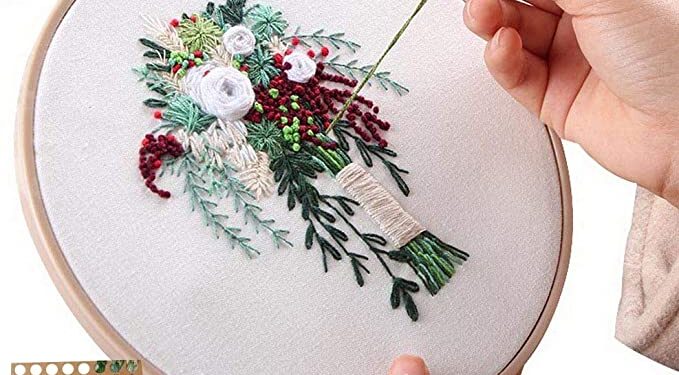From centuries after centuries, crafters always surprise human history with the beauty of their artwork. We find many vibrant colors and decorative art forms and types. Still, none of them match the beauty and mesmerizing features of embroidery.
With time embroidery has been transformed a lot; you can buy embroidery machine and stitch your fabrics; before few decades the embroidery was only possible with hand stitches.
The history of embroidery starts with the history of mankind; in every tradition and every culture, you will find embroidery in myriad forms throughout the world. Whether you find it on clothes or at-home accessories, it is a timeless piece of art and craft that is a permanent element of tradition and culture.
Prevalent from generation to generation across the globe, embroidery has passed from many phases and has become the world’s favorite craft and art form. That is why it is a popular choice everywhere and connects us with cultural glimpses of our ancestors. Check out the custom stitching machine.
Let’s have a look at what does embroidery means and how you start as a beginner:
What does embroidery mean?
We are all well aware of what is embroidery, but here we can write it down in a single specific definition which says that:
It is the art of applying designs and decorative patterns on the fabric using embroidery floss and needles. The designs are classically known as threads, and they are created by using different types of stitches.
Embroidery is not all about threads and interactive stitches. You can add decorative like sequins, pearls, and beads in your design structure. These embellishments are often circular due to hoops and keep your garment taut.
With the development in embroidery, many crafters have gone beyond these embellishments, and you can find embroidery on tennis rackets and metal bases.
Origin and History of embroidery:
As we said, earlier embroidery dates back to the history of mankind. Many legends depict that Athena, The Greek goddess passed down the art of weaving. With such noble legends associated with the art – embroidery was associated with the elite class. For instance, in England, silk garments with embroidery were only made for high-class people.
The other reason for this craft associated with rich people could be access to cloth. Manufacturing of fabric was quite expensive before few centuries, so the art was unapproachable to many people. Long before the textile industry was emerged, people handmade their garments with needles and threads. The threads were also made with hands. Decorating dress with embroidery and other items was considered as sign of high social class.
Here are few things which prove that embroidery dates back thousands of years.
- In Russia, fossilized remains of embroidered garments were excavated, dating back to 1336-1327 BCE. It is the oldest remain of embroidery.
- In the 14th century, BCE embroidery was prevalent among the elite class. Many things were preserved with the preserved Pharaohs, like; a floral collar with petals, blossoms, leaves, and leaves was found.
- Likewise, embroidered garments from the fourth century BCE were excavated along with other remains.
Essentials of embroidery:
When you are starting as beginner you do not need a long list. Here is the list of few essentials:
- Embroidery floss: Available in different colors and shades
- Embroidery hoop: You can buy hoops in different types, size and materials.
- Embroidery needle: It should have big eye and sharp end.
Let’s wrap it up:
Embroidery is an ancient craft, but it is trendy. Crafters never stop surprising us with their interactive and attractive stitches. If you are beginning to embroider, this information will let you know what does embroidery means actually! And that you are becoming part of one of the oldest art of human history.











